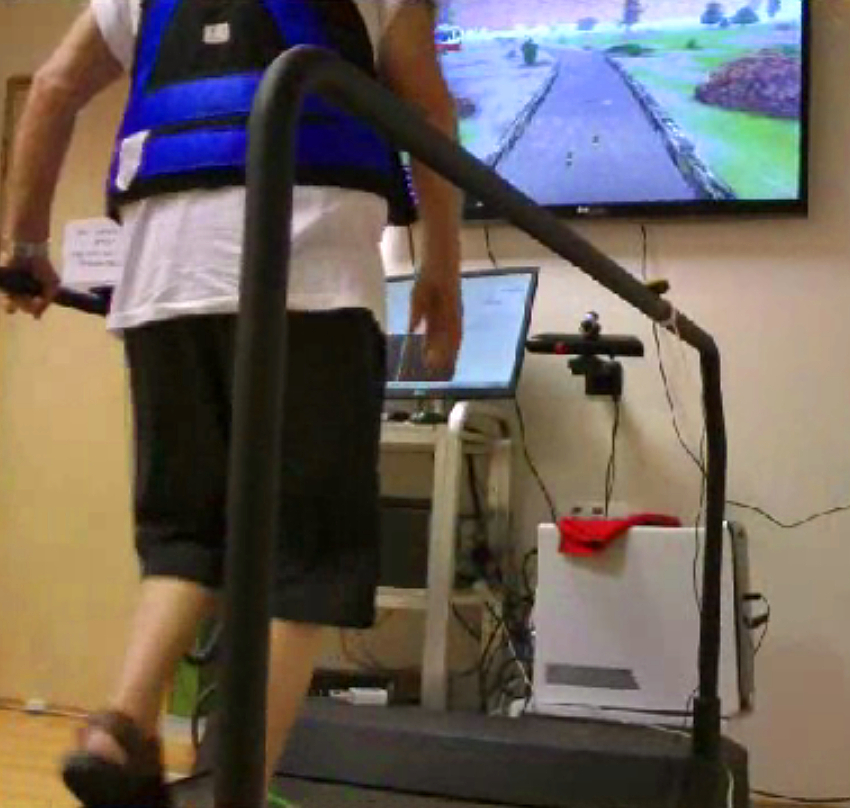Virtual strolls to stop real falls

Thirty per cent of older adults living in the community, and as many as 80 per cent of older adults with mild cognitive impairment, dementia or Parkinson’s disease, fall at least once a year.
Falls can cause injuries, loss of independence, disability, institutionalisation, and death.
Even without injuries, falls often lead to fear of falling, avoiding leaving the house and depression, which in turn often leads to inactivity, muscle weakness, impaired balance and gait, more falls and even social isolation.
In the latest study, researchers analysed data from 282 participants from five clinical sites in Belgium, Israel, Italy, the Netherlands, and the UK between 2013 and 2015.
All participants were aged 60-90, were able to walk at least 5 minutes unassisted, on stable medication, and had reported at least 2 falls in the 6 months before the start of the study.
Nearly half of all participants (130) had Parkinson’s disease, and some (43) had mild cognitive impairment.
Participants were assigned to treadmill training with virtual reality (146), or treadmill training alone (136).
The virtual reality component consisted of a camera that captured the movement of participants’ feet and projected it onto a screen in front of the treadmill, so that participants could ‘see’ their feet walking on the screen in real time.
The game-like simulation was designed to reduce the risk of falls in older adults by including real life challenges such as avoiding and stepping over obstacles like puddles or hurdles, and navigating pathways,
On average, participants in each group took part in 16 training sessions over six weeks, with each session lasting about 45 minutes. Fall rates were recorded in the six months following the end of training. Prior to training, participants in the treadmill only group had an average of 10.7 falls per six months, and participants in the treadmill plus virtual reality group averaged 11.9 falls per six months.
During the six months after training, the incidence rate of falls decreased in both groups, but the decrease was only statistically significant (better than chance alone) in the treadmill plus virtual reality group (11.9 to 6.0 falls in the virtual reality group - a 42 per cent reduction; compared to a decrease from 10.7 to 8.3 in the treadmill only group).
The research is accessible here.
“The finding of a 42 per cent reduction in falls is in line with the most effective fall preventions,” said Professor Stephen Lord from the University of New South Wales in a linked comment.
He pointed out that the rate was “well above the average reduction of 17 per cent for exercise interventions reported in systematic reviews”.
“It is also notable that the reduction in falls reported in the current trial is made in comparison to a treadmill walking intervention of similar intensity, as opposed to no intervention or usual care.”
Prof Lord said the “findings have important implications for clinical practice. No serious adverse events occurred and adherence was good”.
“A health economic analysis was not presented, and although it is the case that VR training is not substantially more resource-intensive than treadmill training, one-on-one supervision was used in this study.
“It is conceivable, however, that treadmill training with a VR component could be administered in community gyms and rehabilitation clinics, and since the intervention is relatively short term in nature, throughput of many people would be possible.”








 Print
Print